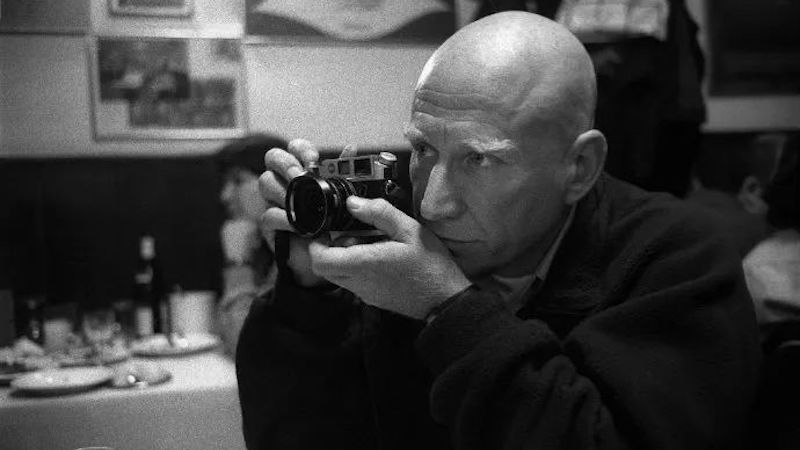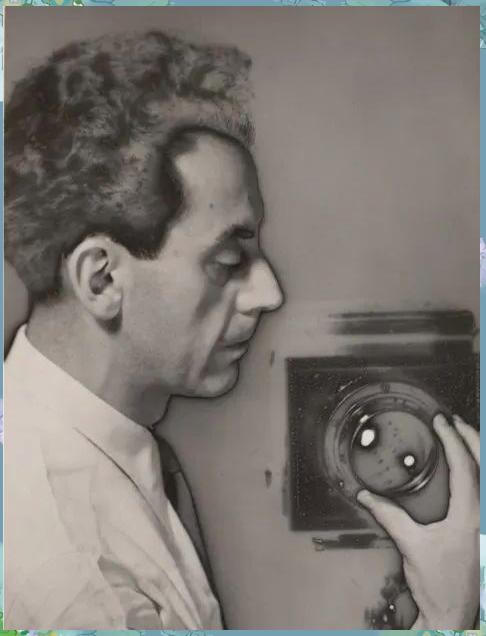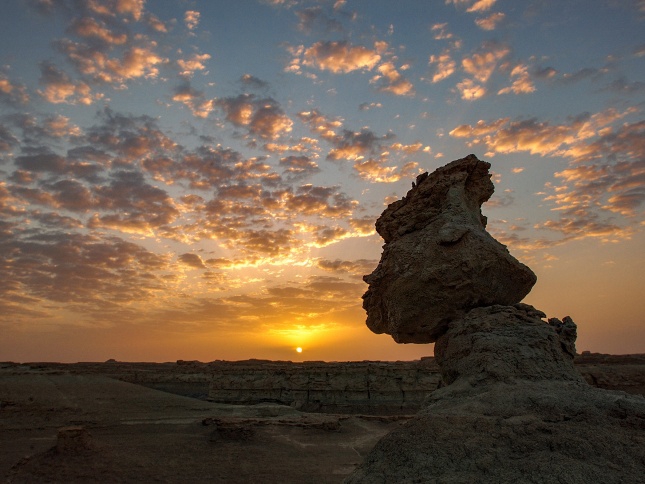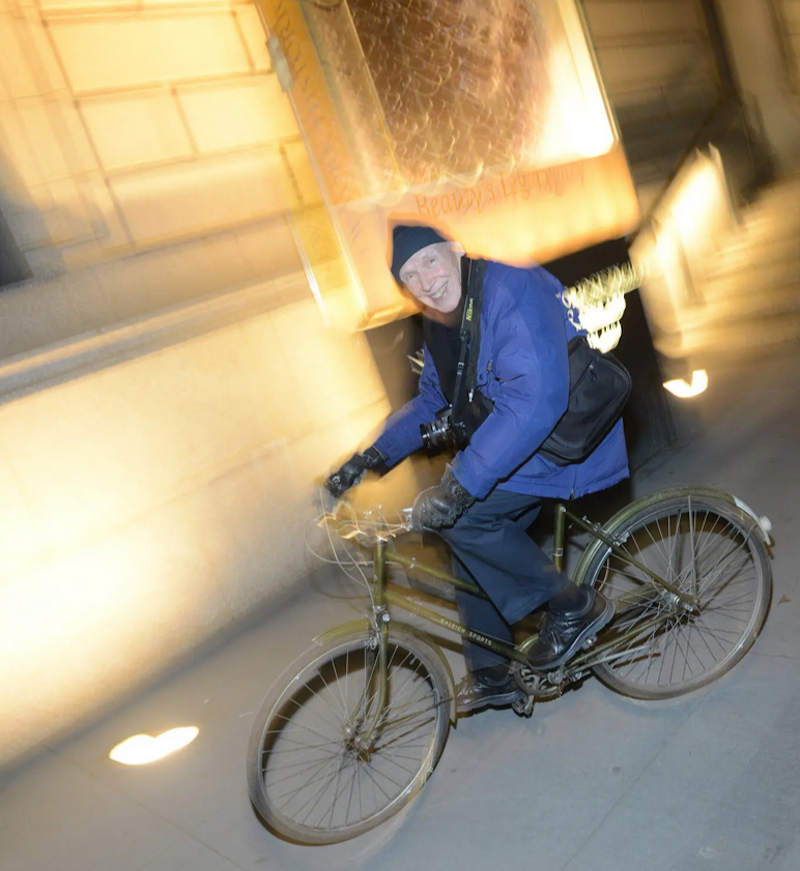
Brazilian photographer Sebastiao Salgado (1944-2025) was once called "the most important photographer of the 21st century". He traveled to the most remote corners of the world, witnessed the darkest desolation, and used his camera to record human suffering and natural epics. From recording the open-pit gold mine in Serra Pera, Brazil to the oil workers who put out the oil field fire in Kuwait, from the starving people in Ethiopia to the refugees of the Rwandan genocide, to capturing endangered natural wonders, he always focused on the hidden truth, and used visual shock to trigger people's thinking on issues such as globalization and ecological crisis.
Salgado passed away in Paris in May this year. On July 17, Fotografiska Center for Image Art in Shanghai held a retrospective of his work. This is the world's first solo retrospective of Salgado after his death, and it is also a continuation of his spiritual wealth.

Sebastiao Salgado depicts the complexity and diversity of the world through photography. The reporter of The Paper learned that the exhibition was jointly organized by Fotografiska Image Art Center and Chengdu Contemporary Image Museum, which combed through Salgado's creative career spanning nearly half a century, and presented his series such as "Genesis", "Laborers", "Immigration", "Sahel", "Taste of Dreams" and "Another America" in a flashback method, showing the human survival scene, natural epic and social changes under his lens.

Sebastião Salgado ©️ Zhong Weixing
“This exhibition is not only a retrospective of Salgado’s artistic achievements, but also a continuation of his spiritual legacy,” said curator Jean-Luc Monterosso. “In the context of ecological crisis, population migration and social division, his works still have strong contemporary significance—both a tribute to the resilience of the human spirit and a silent call for global responsibility.”
Sebastiao Salgado was born in Aimores, Minas Gerais, Brazil in 1944. Later, under the influence of his father, Salgado studied economics and later joined the World Bank. At that time, his girlfriend, Laelia (later his wife), studied architecture. In order to record architectural data, Laelia bought a Leica camera. Every time he went on a business trip, Salgado took the camera and took pictures everywhere. From then on, he fell in love with photography.

Salgado and his wife Lelia
In the exhibition, the "Taste of Dreams" series is Salgado's earliest batch of works, which originated from Salgado's childhood memories closely related to coffee. "When I was a child, I lived in Minas Gerais and often followed my father to drive a truck to various places to collect coffee beans to be processed. Many years later, my wife Lelia Vanik Salgado and I moved to Paris, where I studied economics and chose to write my doctoral thesis on global coffee production and demand. After that, I joined the International Coffee Organization (OIC) as an economist. This job allowed me to visit major coffee producing areas in the world: Rwanda, Burundi, Congo, Uganda... It was also during that period that I borrowed my wife's camera and started taking my first photos."

Exhibition View
Compared with his later works, coffee photography is Salgado's most gentle photography theme. Regarding coffee, he said, "The coffee beans in every cup of coffee have been touched by human hands." In the end, the appeal of photography went beyond coffee. In 1973, Salgado decided to quit his job and become a full-time photographer, and cooperated with many of the world's top photo agencies such as Sigma, Gamma and Magnum.

Coffee pickers at Shangri-La Estate, Ngorongoro Crater Slope Rift Valley, Tanzania, The Taste of Dreams, 2014 © Sebastião Salgado
Another group of early works is the "Another America" series, which tells what Salgado saw and heard during his travels in Latin America. This series is also his first book and is considered one of the most important works of the 1980s. In the exhibition hall, viewers can see the Venezuelan girl selling syrup apples captured by his lens. Next to her, a woman's face is leaning out of the door frame, like a review of fate; in the northeast of Brazil, a child is lying on the ground, playing with bones. Salgado said, "Like Africa, South America occupies an important position in my career as a photographer and in my entire life. Going there is vital to me. I am eager to photograph these countries, and this is also a way for me to get closer to my own culture. Although these regions are different from Brazil, I urgently need to feel this piece of America."

A girl selling apples in syrup in Venezuela, photographed by Salgado. © Sebastião Salgado

These native Mixtec Indians pray to the Earth Goddess, giving thanks for the harvest. Western Sierra Madre, Oaxaca, Mexico, Another America, 1980 © Sebastião Salgado
After America, Salgado turned his lens to the African continent. Since the mid-1970s, he has been working as a photojournalist on the African continent. He reported on conflicts such as the Angolan War and the Spanish Sahara, and then in 1984 and 1985, he focused on the Sahel region. Among them, the Sahel is located in Africa and spans six countries. In 1985, the region suffered unprecedented drought and famine, coupled with ongoing conflicts and wars, which made the situation worse. Together with the team of Doctors Without Borders, Salgado worked mainly in Mali, Chad, Ethiopia, Sudan and Eritrea. The images he recorded with his camera became a witness to this humanitarian disaster, published in the international media, and left a deep impression on audiences around the world.

Refugees at the dried-up Lake Faguibine, Mali, Sahel, 1985 © Sebastião Salgado

Workers emerging from a coal mine, Dhanbad, Bihar, India, Labourers, 1989 © Sebastião Salgado
Afterwards, the audience can see Salgado's "Workers" series, which was a series of photographic reports on manual labor in twenty-two countries on five continents between 1986 and 1992. He photographed and reported on oil extraction in Azerbaijan, shipyards in Poland and France, tea picking in Rwanda, tuna fishing in Sicily, textile industries in Bangladesh and Kazakhstan, and other fields, telling a world of labor that is both a hero and a victim - a ruthless but gradually disappearing world. "Workers is a tribute to workers, a farewell to a world that is slowly disappearing, and an ode to the men and women who still work with their hands - as they have been doing for centuries." Salgado said.

Steelworkers, Dunkirk, France, Labourers, 1987 © Sebastião Salgado

Churchgate Railway Station, Mumbai, India, Migrants, 1995 © Sebastião Salgado

Oilfield workers put out a fire in Kuwait's oil fields, photographed by Salgado © Sebastião Salgado
Next up is the Migrants series, shot by Salgado between 1993 and 2000. He spent six years living with immigrants. He visited thirty-five countries and documented the migration of different groups of people. The project involved the migration of Latin American people to the United States, the exile of Vietnamese refugees, displaced persons in Afghanistan, the refugee tragedy in the former Yugoslavia, the flight of Rwandan Hutu refugees, the landless peasant movement in Brazil, and the megacities of East and West Asia—tragedies that profoundly reshaped the world.
Salgado prefers black and white images. Through strong contrast between light and dark and delicate texture, he sublimates documentary photography into an art with both poetic and ethical depth. Loneliness, death, and escape become black and white moments, a touch of gray before dawn.
However, after this project, Salgado was exhausted and returned to his hometown in Brazil. But he found that the land in his hometown was as broken as himself. With the rapid development of urbanization, the area of rainforest in his hometown has been sharply reduced. Therefore, he and his wife planned to plant trees for their hometown, and they used all their savings for planting trees.

Claw of a marine iguana, Galapagos Islands, Ecuador, Genesis, 2004 © Sebastião Salgado

The Moshi and Surma women are the only tribal women in the world who still wear lip plates. Only women of high status are allowed to wear lip plates, in the Moshi village in Mago National Park near Jinka, Ethiopia, in 2007 © Sebastião Salgado
The earth healed Salgado's broken and desperate heart. The joy brought by the jungle's gradual rebirth rekindled his creative passion. Instead of returning to past photography projects, he started a new theme - "Nature". From 2004 to 2012, he made nearly 32 expeditions to the extreme places of the world, from the Galapagos Islands to the Amazon rainforest, to Africa and the Arctic. He began an 8-year shooting, from the earth's primitive scenery, to ancient wild animals that still refused to be domesticated, to primitive tribes that have not changed their lifestyles for thousands of years. He named the project "Genesis". This is also the first section that the audience sees when they enter the exhibition hall. Salgado hopes that through these photos, people will think about a traditional way of life that lives in harmony with nature.
Of these works, Salgado's wife, Lelia, wrote, "It tells the story of a natural world that evolved over thousands of years before being impacted by the pace of modern life. These photographs present landscapes, animals and peoples that have been able to escape contemporary civilization. They celebrate these vast and remote areas where nature still retains its originality, tranquility and magnificence."

Brooks Range, Arctic National Wildlife Refuge, Alaska, USA, Genesis, 2009 © Sebastião Salgado

Chinook penguins on an iceberg, between Savodovsky and Vysokoi Islands, South Sandwich Islands, Genesis, 2009 © Sebastião Salgado
Although Salgado's perceptual perception has changed his photography style, he still insists on using black and white photography. "I don't need green to show leaves, I don't need blue to show the ocean or sky, black, white and various shades of gray can help me focus on the density of the subject." When he finished shooting "Genesis", he was nearly 70 years old. It is said that during the exhibition of "Genesis" in venues such as the Natural History Museum in London, the European House of Photography in Paris and the International Center of Photography in New York, the number of visitors worldwide exceeded 2 million.

Southern Right Whale, Peninsula Valdes, Argentina, Genesis, 2004 © Sebastião Salgado

Southern elephant seals in St Andrews Bay, South Georgia Island, Genesis, 2009 © Sebastião Salgado
In his later years, Salgado often talked with his wife about the past, children, newly bloomed flowers, and sometimes death. However, death seemed to be nothing to him. In the documentary "Salt of the Earth", he talked about his afterlife leisurely. "When I leave, this forest will return to the way it was when I was born. Everything will be complete because of this."
Salgado is a practitioner of tree planting. According to statistics, since 1998, the organization founded by him and his wife has planted more than 7 million trees and reforested 2,000 hectares. People's evaluation of them is, "They witness death in the world and sow hope in the ruins."

Salgado plants trees
In May this year, Salgado died in Paris. Brazilian President Lula mourned for him and said, "Salgado not only used his eyes and camera to depict people, but also poured all his soul and efforts into it." Regarding his photography career, the British newspaper The Guardian wrote, "Salgado traveled to the farthest corners of the world and witnessed the darkest desolation."
“His lens makes the invisible visible and gives voice to the silent,” said Lelia.
The exhibition will run until November 9th.


